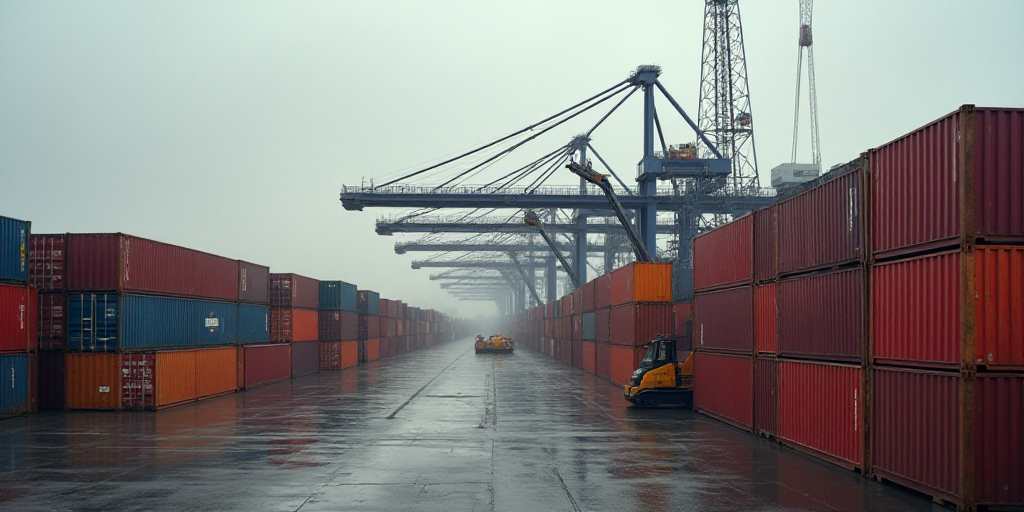Background on Key Players and Relevance
The recent 90-day truce between China and the United States on punitive tariffs has sparked a surge in demand for container ships, leading to shipping delays and congestion at Chinese ports. This situation is reminiscent of global transportation disruptions during the COVID-19 pandemic.
Key players in this scenario include US importers, ranging from sports shoes and furniture to construction supplies and automobile parts. Companies like Hapag-Lloyd, a German container ship operator, and Vizion, a container tracking software provider, have reported high demand for shipping services.
Immediate Impact: Surge in Container Bookings
Following the truce announcement, there has been a significant increase in container bookings. According to Hapag-Lloyd, only long-term contract clients are being accommodated due to limited space for spontaneous reservations.
Vizion’s data shows a 277% increase in average bookings (21,530 Twenty-foot Equivalent Units or TEU) compared to the week ending May 5th. Manufacturers of holiday decorations, such as Lalo, are pre-booking cargo for US retailers like Walmart.
Anticipated Deluges at US West Coast Ports
In the coming weeks, this surge in shipments will result in a large influx of arrivals at US West Coast ports. However, industry experts, including the CEO of the Port of Los Angeles (the busiest US maritime port and leading recipient of shipments from China), do not foresee a Covid-19-level cargo tsunami.
They predict a substantial but manageable wave, with spot freight rates from Shanghai to Los Angeles rising by 16% last week to $3,136 per 40-foot container. This rate is less than half of April 2024 levels but could jump to around $6,000 per container on June 1st if shipping lines approve fare hikes.
Historical Context and Challenges
During previous demand spikes, such as those experienced at the onset of the pandemic, factories and container ships were overwhelmed, disrupting supply chains. Experts in transportation and retail assert that 90 days is insufficient time for most factories to fulfill new orders.
The current situation is complicated by the weakened US retail, construction, and manufacturing sectors—key drivers of container shipments—due to tariffs imposed by the Trump administration. Furthermore, many US businesses are grappling with accumulated inventories before tariffs were implemented on China and other countries.
Key Questions and Answers
- What is the cause of this surge in container demand? The 90-day truce between China and the US on tariffs has led to a rush by US importers to ship goods before tariffs are reinstated, causing delays and congestion.
- How do current conditions compare to the COVID-19 pandemic? While there is a surge in demand, experts predict it will be more manageable than the pandemic-induced transportation disruptions.
- What challenges do factories and shipping lines face? Limited container ship availability, reduced shipping schedules between China and the US, and uncertainty about future tariffs pose significant challenges.
- How long will these delays last? With only 90 days before tariffs could be reinstated, it may take time for factories to adjust and clear the backlog of goods.






